"Mum, mum, look at the fat lady" says the autistic kid. His mum blushes and tells him to be quiet, it's not polite to point that kind of thing out. "But mum, she's really fat!" cries the kid.
The conventional explanation is that the autistic child lacks social skills.
I offer this alternative explanation: he has social skills, but, well, she's really fat. It's a fascinating new phenomenon: really fat people.
It's a matter of priorities.
Allow me to illustrate, with the able assistance of the lovely Lena and friends:

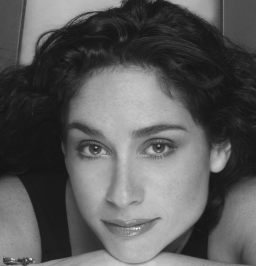

I've been playing with a very rough approximation of the Itti-Baldi surprise metric (see previous post). Attention is drawn to unusual features of an image, outliers. I'm using this to detect "surprising" edge-type features in an image.
In normal people, I hypothesize that extreme outliers don't attract a lot more attention than less extreme outliers, perhaps even less. Weighted by attention, a normal person might see something like this:

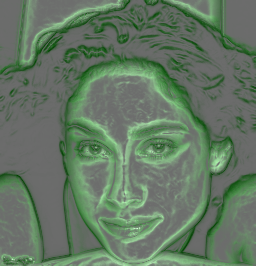
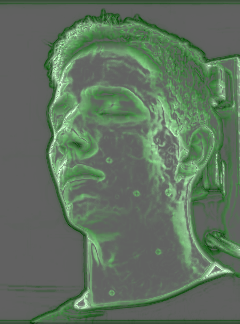
whereas a severely autistic person might see this:
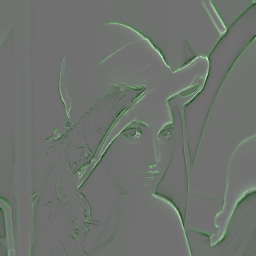

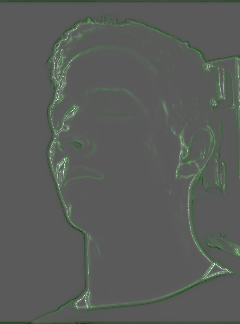
The strongest edges grab their attention, and everything else never gets much of a chance.
(Caveat: the difference is largely just a matter of the "normal" model clipping the extremes of surprise, rather than a different pattern of surprise. i.e. a rank-ordering of regions would not differ much between "normal" and "autistic".)
This is not taking into account top-down influence on attention. Such influence might for example be saying "look at the face, I want to know more about the face so I can update my model of the person's emotional state". You can easily see how any such top-down influence would be competing, in the autistic child, against the very strong bottom-up assessment that unusual features are really interesting.